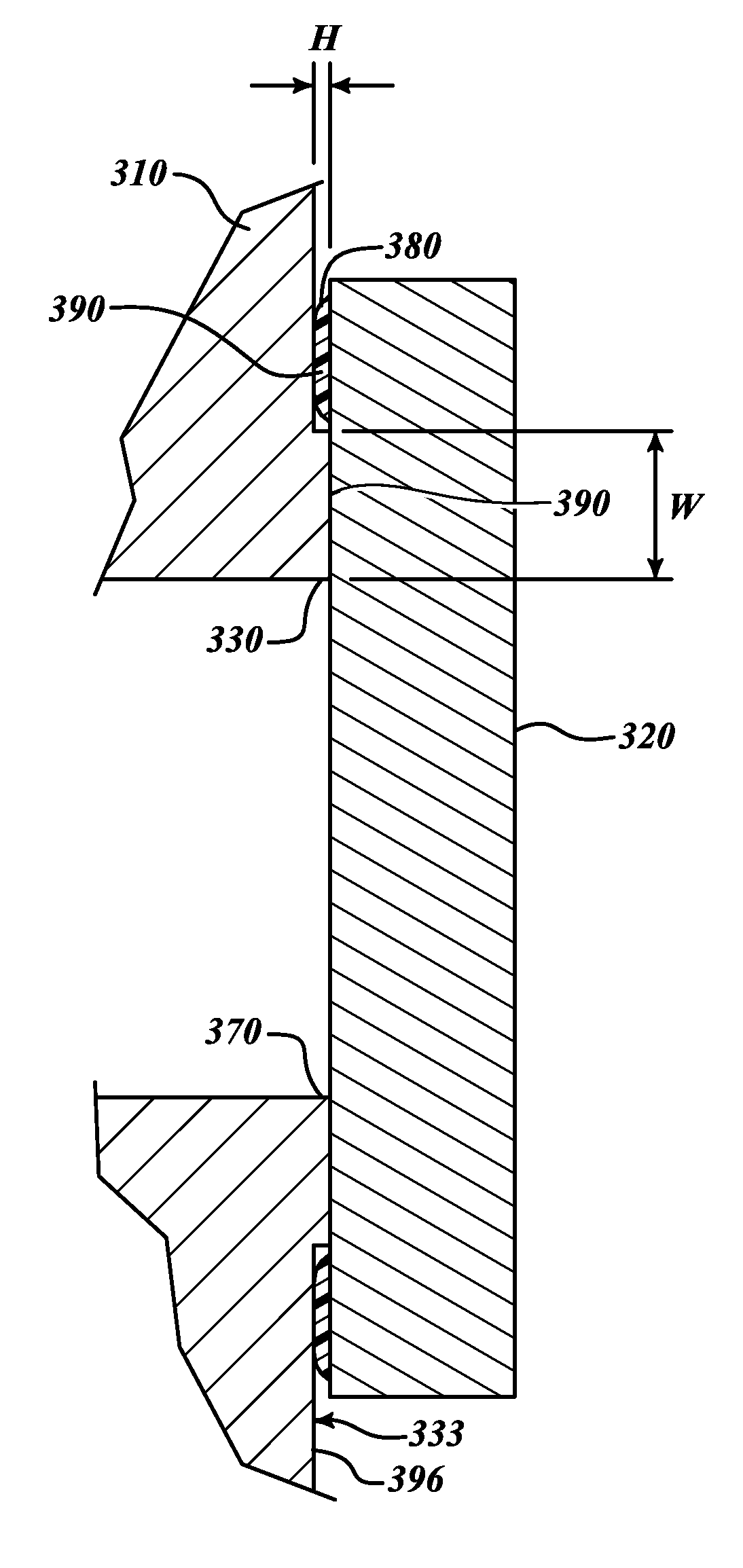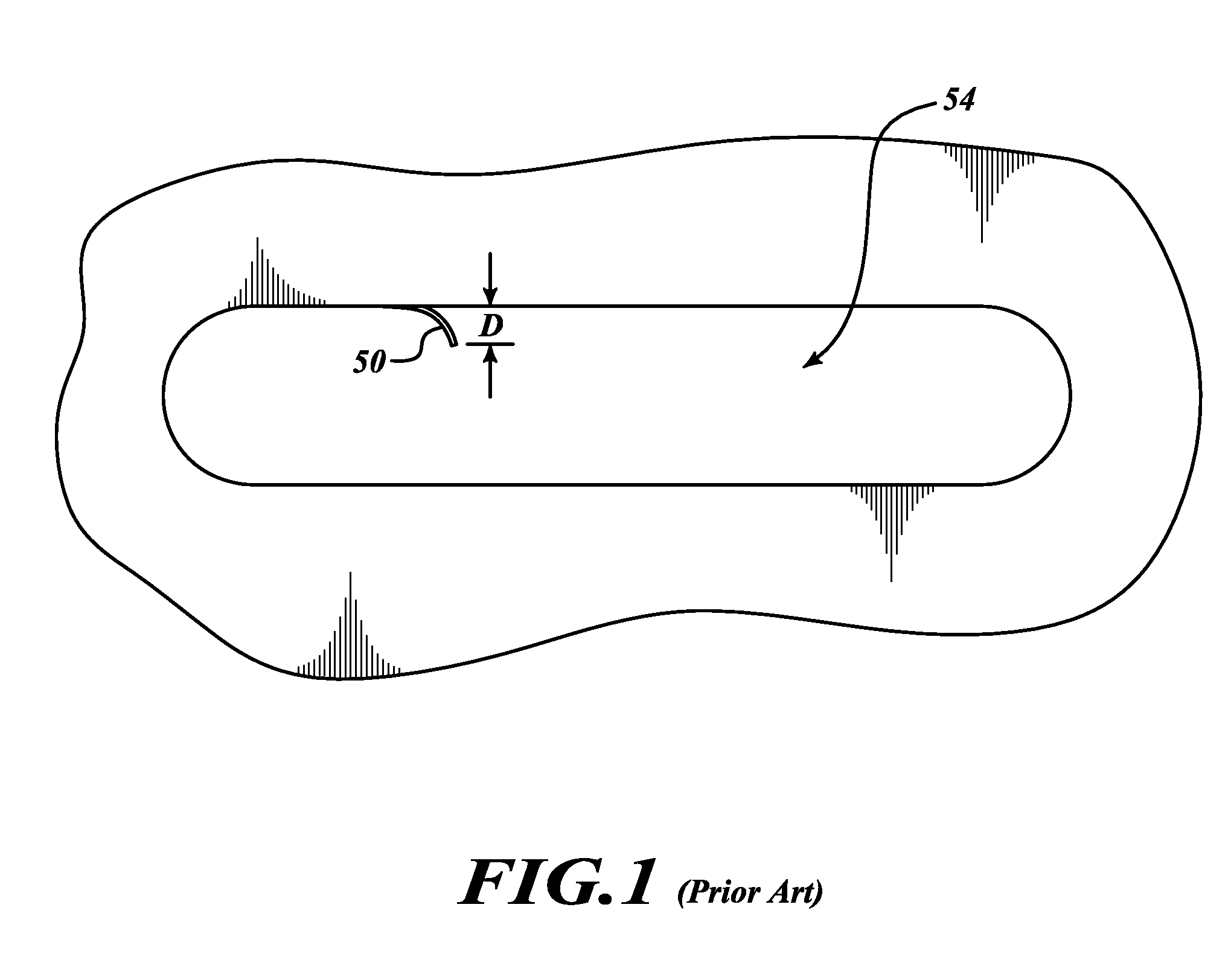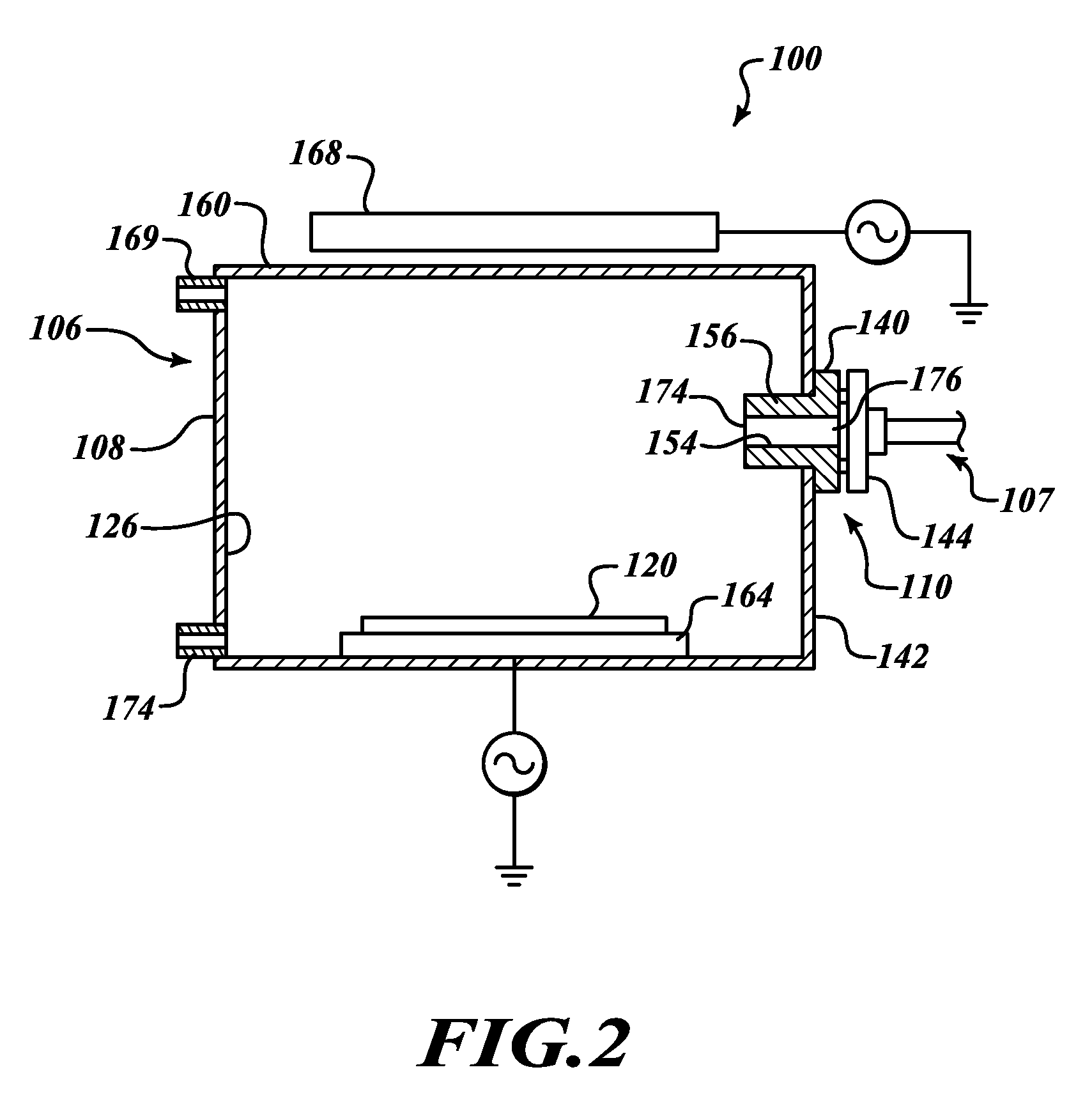Door assembly for substrate processing chamber
a technology for processing chambers and substrates, applied in the field of door assemblies, can solve the problems of reducing overall processing efficiency, etch byproduct accumulation on the walls of the processing chambers, and affecting the processing quality, so as to prevent or tighten the seal, the effect of inhibiting or preventing the formation of stringers
- Summary
- Abstract
- Description
- Claims
- Application Information
AI Technical Summary
Benefits of technology
Problems solved by technology
Method used
Image
Examples
Embodiment Construction
[0027]FIG. 2 shows a substrate processing apparatus 100 including a processing chamber 106 and a door handler 107. The processing chamber 106 includes an enclosure 108 and a door assembly 110. The enclosure 108 defines a reaction chamber 126. The door assembly 110 includes a substrate entrance 140 coupled to and extending through a front wall 142 of the enclosure 108. The door handler 107 moves a door 144 of the door assembly 110 between an open position for moving substrates into and out of the processing chamber 106 and a closed position (illustrated in FIG. 2) for sealing the chamber 126. In this manner, the processing chamber 106 can be opened and closed.
[0028]The entrance 140 includes a door tunnel 154 that can remain unobstructed and generally stringer free for a much longer time than conventional door tunnels to reduce the frequency of cleaning operations, reduce yield losses, and allow the use of large substrate handlers. Solid material build-up within the tunnel 154 can be ...
PUM
| Property | Measurement | Unit |
|---|---|---|
| depth | aaaaa | aaaaa |
| depth | aaaaa | aaaaa |
| distance | aaaaa | aaaaa |
Abstract
Description
Claims
Application Information
 Login to View More
Login to View More - R&D
- Intellectual Property
- Life Sciences
- Materials
- Tech Scout
- Unparalleled Data Quality
- Higher Quality Content
- 60% Fewer Hallucinations
Browse by: Latest US Patents, China's latest patents, Technical Efficacy Thesaurus, Application Domain, Technology Topic, Popular Technical Reports.
© 2025 PatSnap. All rights reserved.Legal|Privacy policy|Modern Slavery Act Transparency Statement|Sitemap|About US| Contact US: help@patsnap.com



